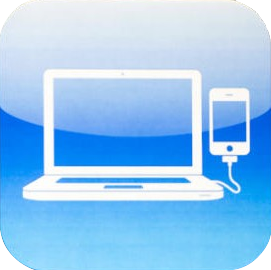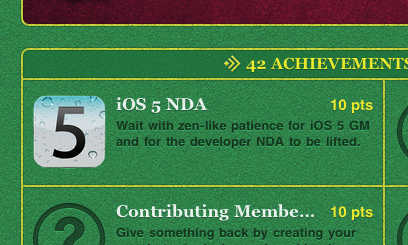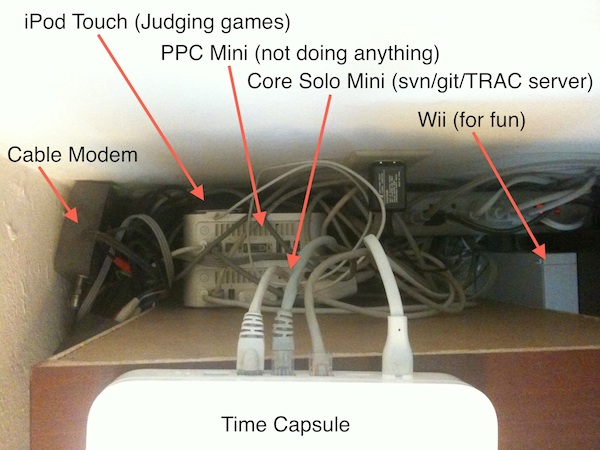Archive for the 'Networking' Category

A large number of the world’s wireless carriers enable internet tethering by default for no extra charge when using an iPhone (because data is just data after all). In the United States, no major carrier has had the good sense to do it even with data caps and throttling. Any way you look at it, paying for tethering is a bad deal. So what then are your options when you want to use your phone’s internet connection on your laptop? You can always jailbreak and enable iOS’s built-in tethering (marketed as “Personal Hotspot“) using a tweaked carrier profile or install a stanadlone tethering app. However, jailbreaking has known risks associated with it and some US carriers have stated that they will cut your service if they detect tethering without the requisite contract on their end (exactly what detection methods they employ and how much work they have invested in enforcement remains unclear). What then are we left with? Proxying. (more…)
Posted in Debugging, Hacking, iOS, iPad, iPhone, Mac OS X, Networking, Programming, Systems | 6 Comments »

CloudFlare is a popular, DNS-level proxy service that has layered on tons of useful features over the years like asset optimization and denial of service attack mitigation. Probably the most prominent service they provide though is caching. This caching functionality is primarily geared towards webpage content. Out of the box, CloudFlare’s caching settings work great and it intelligently decides what kind of files to cache (images, css, javascript) and what not to cache (html or other files that could contain dynamic content). You can tune CloudFlare’s settings to fit your specific needs and do a lot to lighten the load on your server. I started to think about all the interesting things I could do with a distributed caching layer that sits in front of my servers. I was designing the back end of ultralink.me at the time and thought: “Gee, CloudFlare might actually make a pretty decent read cache!“.
Now I have to start this article with some caveats. Using CloudFlare in this manner will not solve all your problems or even be appropriate in many cases. But if you do have a certain kind of workload and can expose the interface to your database in a specific way, it can really do a lot to absorb your database read traffic. (more…)
Posted in CloudFlare, Databases, Debugging, General, Hacking, Indie, Networking, Performance, Programming, Servers, Systems, Ultralink | No Comments »
Some of you might have noticed that I haven’t written any blog posts here in a long while. That’s because I have been head down, cranking away on my latest exciting project. It is a very bold, new concept unlike anything that has been seen before. I call it the ‘Ultralink’.
To explain what an ultralink is, let’s first examine it’s ancestor, the hyperlink. The hyperlink is the most basic grammar of the internet. It’s assumptions and usage quickly permeate anyone who has used the web for more than five minutes. Even grandma knows what a hyperlink is and how to use it. I want to take that foundation and evolve it forward into something even more useful, more valuable and more user friendly. I want to re-write the most basic grammar of the internet.
The easiest way to understand what an ultralink is, is to go to https://ultralink.me and watch the introduction video there on the front page. Then install one of the browser extensions and take them for a test drive on any page on the internet.
We have finally decided to declare public beta and are now putting ourselves out there for all the world to use. We want feedback so that we can continually make our products more awesome. I would ask that you please take a look at the resources we have for ultralink above (and share/like/retweet/etc.), try them out for yourself and send me feedback on what you thought was awesome and what can be improved.
Hyperlinks still have their place, but ultralinks can do much of what they do better and some stuff they just can’t do at all. It’s the hyperlink… 2.0.
Posted in Hacking, Indie, Marketing, Networking, Programming, Servers, Systems, Ultralink | No Comments »

It is always fun to try and guess what Apple is going to do next. You can guarantee that there will always be surprises and sure bets, letdowns and magical moments. The Apple rumor sites do a decent job of soliciting leaks, reading between the lines and making educated conjecture. As a developer, I often like to take a good look at where Apple’s technology is right now and make logical extrapolations as to where things are headed. Oftentimes, when Apple announces some new feature or technology it seems obvious in retrospect if we had only connected the dots. Based on 2011’s release schedule, it is a fair bet to say that Apple is going to announce iOS 6 at WWDC sometime this summer and distribute a developer beta. That means that in the coming months little trickles of information are going to get doled out to the rumor sites about what kind of changes and additions we can expect. Just for fun, I wanted to get my own predictions out in the open before any of that started. Here is my very developer-oriented prediction list of what we might be expecting in iOS 6.
UPDATE: WWDC and the iOS 6 beta have come and gone. Some of my predictions now have conclusions. You will notice however that most of the predictions have not yet been updated. That is because there is the potential for Apple to be keeping a few more surprises up their sleeve for the fall when iOS 6 goes GM. Inline below are the results so far.
UPDATE2: iOS 6 GM is here which means that the NDA has lifted! Check down below to see how well I did. (more…)
Posted in 60beat, AirPlay, App Store, Apple TV, Debugging, Game Center, GamePad, Games, General, Hacking, iOS, iPad, iPhone, Mac OS X, Marketing, Networking, Programming, Security/Cryptography, Systems, Video, Video Games, Web | 4 Comments »
Achievement Unlocked: iOS 5 NDA

In a previous blog post I outlined my need for an iOS server. I had found a sufficient but non-optimal solution for iOS devices running iOS 4.X. I mentioned at the end of that article that I had found an optimal solution utilizing some new features in iOS 5. Now that iOS 5 has gone gold master and the NDA has been lifted I can outline in detail how to get your own iOS server up and running. To review, the three requirements for setting up a server in my situation are that it must:
- Be able to receive push notifications (so it can get it’s work)
- Have it’s display turned off (to save energy and avoid things like screen burn-in/fatigue)
- Require no human interaction (needs to be completely autonomous)
In the previous article I outlined why these were in conflict with each other on iOS 4 devices. However, there is some new functionality and behavior policies that allow all three requirements to be fulfilled.
(more…)
Posted in Cannonade, Debugging, Game Center, Games, Hacking, iOS, Networking, Programming, Servers, Systems | 2 Comments »

AirPlay Mirroring was without a doubt, one of the coolest iOS 5 features announced to the public at the 2011 WWDC Keynote. This amazing technology allows you to display the screen of your iOS device on an Apple TV 2. At the moment, the only supported mirroring device is the iPad 2 and the receiving device is limited to only the second generation Apple TV. Airplay Mirroring is the latest in a series of Apple media streaming technologies. The previous entry in the family was Airplay Video, which is a slightly different technology that allows specific content to be broadcast from a variety of iOS devices and iTunes to an Apple TV 2. The precursor to that technology was originally called AirTunes, and is used to broadcast audio content from iOS devices and iTunes to the AirPort Express and Apple TV (either first gen or second gen). One peculiar thing people noted about AirPlay Video was that it’s wide open and unencrypted! This was surprising in light of the fact that AirTunes was most definitely not. Because of AirPlay Video’s relatively easy hackability, there quickly sprang up all manner of apps for both Mac OS X and iOS which would act as an AirPlay Video consumer.
So my thought process went like thus:
- AirTunes – Encrypted
- AirPlay Video – Unencrypted
- AirPlay Mirroring – ???
(more…)
Posted in AirPlay, Apple TV, Bugs, Debugging, Hacking, iOS, iPad, Networking, Programming, Security/Cryptography, Systems, Video | 36 Comments »

Top-down view of the Aoren Software datacenter in the living room corner.
Why, you might ask? In my case the answer is simply because it is my only alternative. In development of my game Cannonade there quickly arose a need to be able to replay my user’s completed games and validate the results with exactness. In order to obtain that level of exactness, my games must execute with complete determinism. Unfortunately the implementation of floating-point match according to IEEE754 can actually vary somewhat between x86 and ARM processors. This means that if I replayed a game that two of my users played using iOS devices on an x86-based server, the results of the replay would very quickly diverge. Thus I am left with no choice but to set up a dedicated iOS device to wait for notifications of the matches that it needs to replay and validate (a process I call judging). An iOS server you might say.
(more…)
Posted in Bullet3d, Cannonade, Computer Games, Game Center, Games, Hacking, Indie, iOS, Networking, Performance, Programming, Security/Cryptography, Servers, Startups, Systems | 2 Comments »
Even though many of you already know about my current project (I have also written a few blog posts about it) it is time to officially announce it and give it a quick introduction. The first project that I have chosen to work on since going indie again is an iOS game called “Cannonade”. It is a turn-based physics game with an emphasis on multiplayer and creativity. So far I have the core engine up and running. I have chosen to use the Bullet3D engine for physics simulation because of it’s general support and stability, iOS support and iOS performance. The rendering and effects engine, UI, networking engine and everything else I am writing from scratch myself. I am basing enough crucial functionality on iOS specific components (like UIKit and Game Center) that I can say with good confidence that it is going to be an iOS exclusive (although some parts of the engine may make it to other platforms). It is currently in early Alpha and there is a lot of game design and asset creation left to do. Things are still very malleable and everything is still placeholder (please keep that in mind when playing test versions and viewing screenshots 😉 ). I have a comprehensive testing plan, work schedule and timetable which I am hoping will ensure that Cannonade becomes a polished, high quality product by the time it hits the App Store.
(more…)
Posted in Bullet3d, Cannonade, Game Center, Games, Graphics, Indie, iOS, Networking, Startups | No Comments »
One day while I was hard at work a couple weeks ago I hit a really difficult technical snag. I stood up from my desk, let out a sigh and declared to the other person working in the office that “I’ve lost my determinism!”. He then inquired how I had lost my motivation while visibly wondering if I had used the word correctly. Although I had hit a significant roadblock, my determination to overcome it and make progress on my game was higher then ever. The “determinism” of my game however, had been lost. Now I needed to take it back.
(more…)
Posted in Bullet3d, Computer Games, CoreGraphics, Debugging, Game Center, Games, Hacking, Indie, iOS, MySQL, Networking, OpenGL, Programming, Security/Cryptography, Starcraft, Video Games | No Comments »
The biggest problem I see with the current implementation (iOS 4.x) of Game Center is that there is no way for Game Center users to authenticate themselves to 3rd-party servers. Let me explain from the top. Game Center is Apple’s new games oriented social network and infrastructure on iOS devices. It has a lot of great features like leaderboards, achievements and matchmaking. Once a user creates an account on an iOS device they are perpetually signed in at the operating system level. This is great because it means that all existing and future Game Center games can take full advantage of its features, social connectivity and never have to make users create an account (users HATE creating new accounts) or even sign in again (unless of course they explicitly sign out). From the game developer perspective, Game Center is really awesome. There are a lot of developers (myself included) who do not want to have to:
- Create a complete login infrastructure
- Store and handle people’s passwords safely
- Figure out some sort of account confirmation
- Implement password recovery
- Encourage users to start building YET another social graph on your service/game
- Handle other support related support requests
(more…)
Posted in Bugs, Game Center, Games, Indie, iOS, iPad, iPhone, Networking, Programming, Security/Cryptography | 7 Comments »















